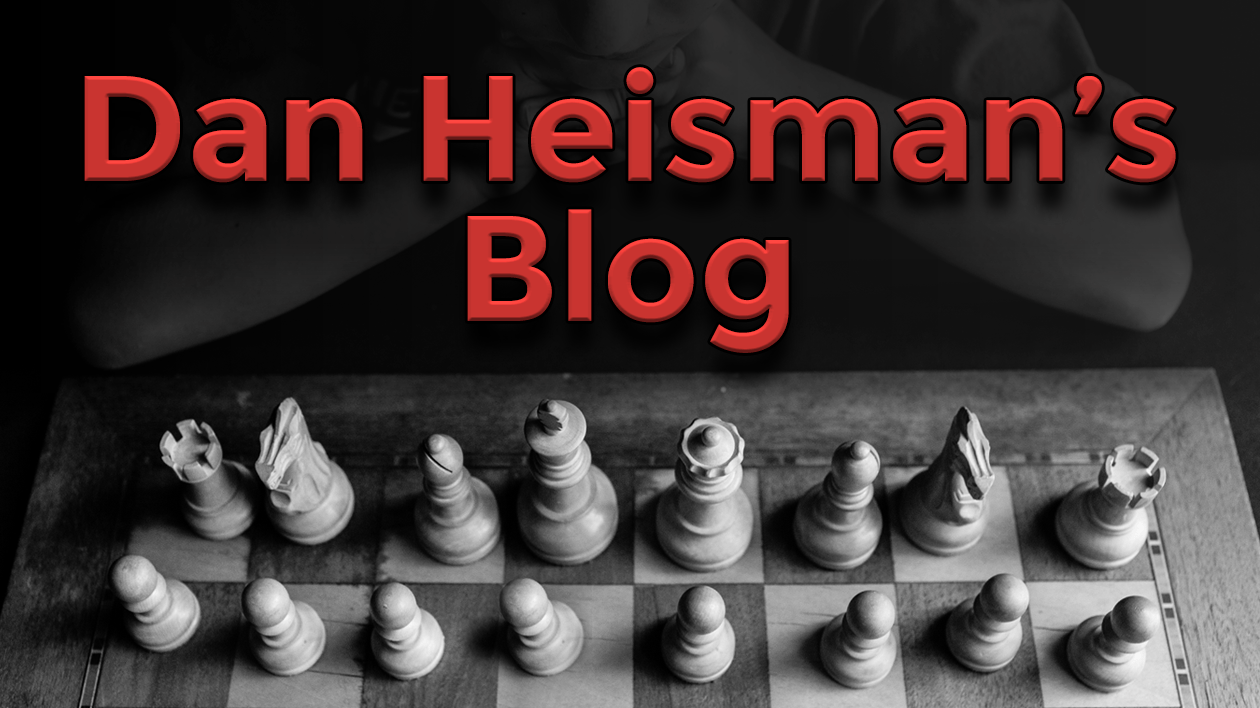
The Mythical "Capture with the Least Valuable Piece First" Principle
Example 1: If White captures on e5 on the fourth move in the game below, which piece should he use to capture first? (The start of the blog may seem too easy, but it's to make a point, so stick with me and see what you might learn...)
Of course, 4.dxe5 is necessary since the other capture, 4.Nxe5 loses a piece to 4...dxe5.
Example 2: In the following position, White has a decision to make on move 7. What should he do?
I suspect you got the correct answer is to win a pawn by capturing 7.Nxd5.
Example 3: In the following position, what should White play and why?
Again, it is easy. 1.Rxd5 wins back the pawn while 1.Qxd5?? loses material.
From the preceding examples, what rule/principle can you generalize that would help a player find the right move?
The answer, which superficially seems reasonable, is "When multiple pieces can capture on a guarded square, start by capturing with the piece worth the least."
The problem is that there is no such principle, or at least you have to understand that this "principle" would only be applied in certain types of situations, primarily if the defending piece(s) are worth less than some of the pieces that might capture, but equal or greater to others. In each of the examples above, the first capturing piece was worth exactly equal to the lowest valued (or only) defender. But in those cases the calculation is trivial (as it should have been). However, when the decision on which piece to first capture is not trivial, using this "principle" will often lead you astray.
In his interesting book Move First and Think Later Willy Hendriks discusses how one can develop/show false principles by using misleading examples in Chapter 7: "If White advances with g4, block his aggression with ...g5." He shows how one can provide seemingly typical examples to back up your "principle" and mislead the reader toward false conclusions.
The following diagram, Example 4, is similar to Example 2: What should White play on his 5th move?
When I give this and similar positions to students, most suggest that 5.Nxd5 is correct. When I ask why, the two most common answers are:
- "Take with the least valuable piece first", and
- "Don't develop the queen too early"
 .
.- 1.The knight is already well-placed, and the queen is undeveloped, so getting another piece into the game, everything else being equal, is better,
- 2.You don't want to pin your own pieces. After 5.Nxd5 the knight is pinned to the queen, although it's a mild pin where the worse that can happen is you might lose castling rights, and
- 3.Most importantly, when ahead trade pieces but not necessarily pawns! The most important piece to trade is the queen. Here White is very wisely offering to Black the very annoying (and helpful for White) "Trade or retreat!" option that is an important part of good technique. Black can't very well decline since avoiding the trade of queens means that Black has to deal with 6.Qxa8. After 5...Qxd5 6.Nxd5 White is ahead a pawn in a queenless middlegame, is ahead in development, and has a better pawn structure to boot.
So, next time someone quotes "Take with the lowest valued piece first", please realize this is quite a restricted (I prefer nonexistent) principle. Following this advice in positions where taking with more valuable pieces is safe can often lead you to basic, incorrect strategic - and possibly even tactically questionable - decisions. Hopefully this article will help illuminate the difference.